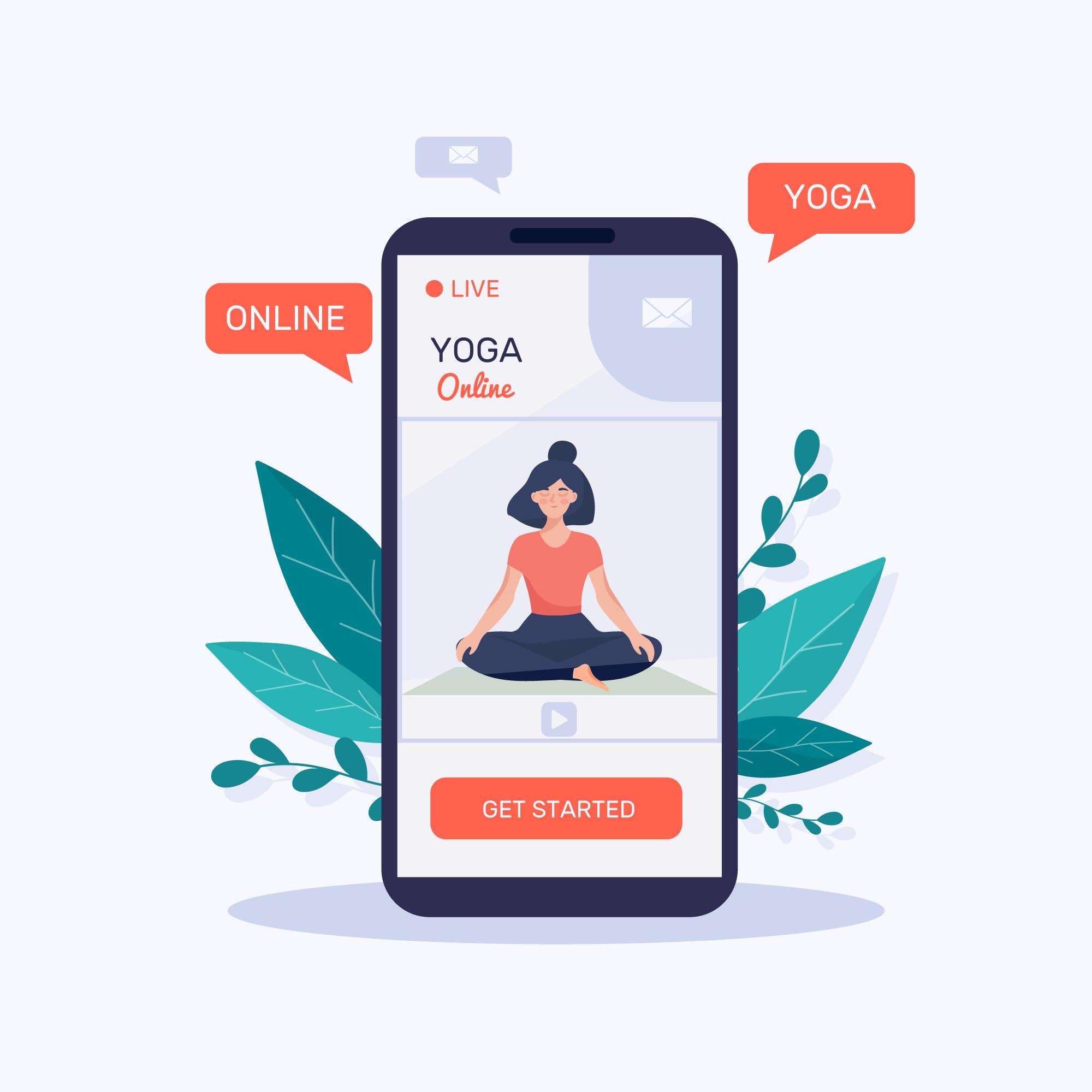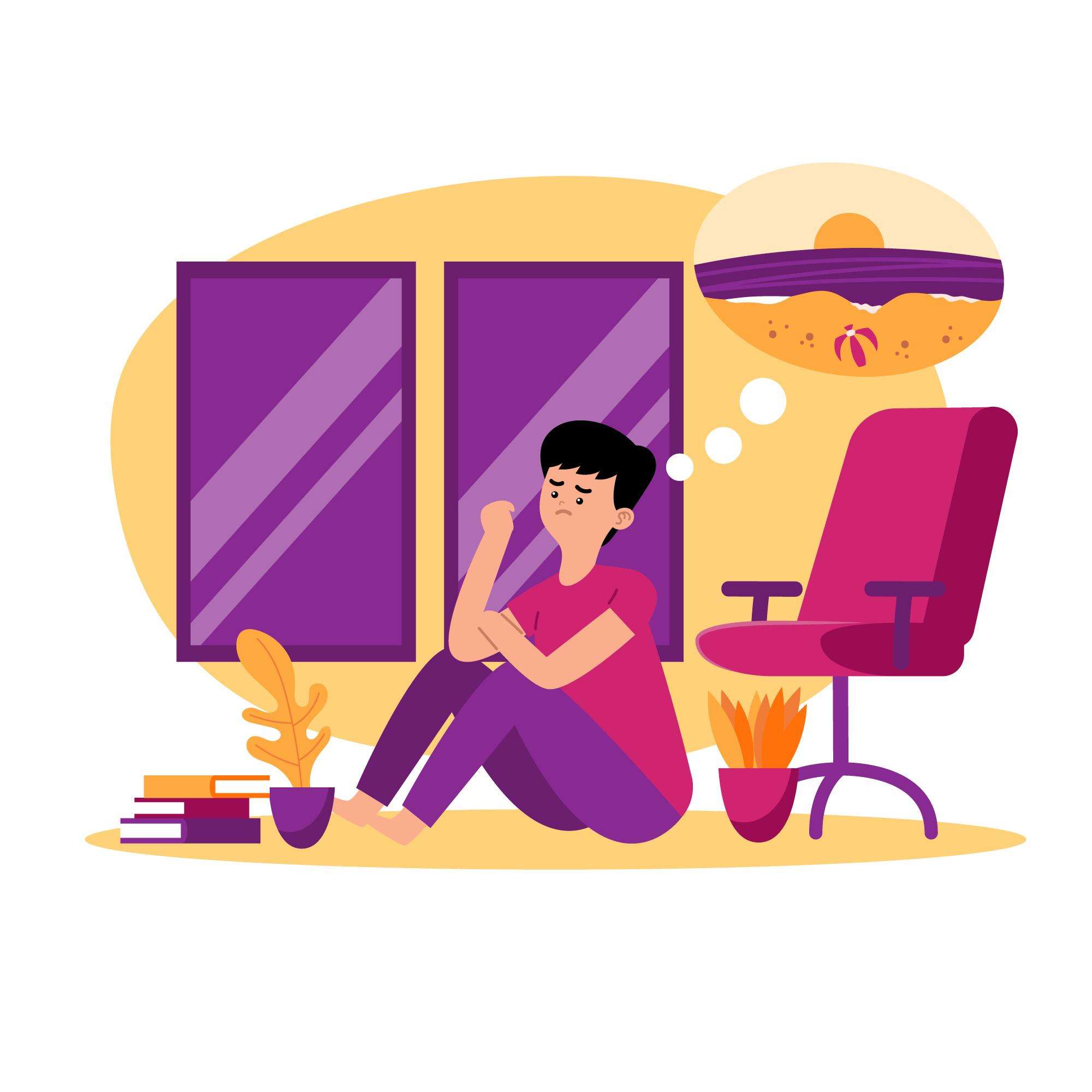In today’s high-paced world, stress and anxiety seem like inevitable companions in our daily lives. If you’ve been searching for ways to reduce stress, improve mental clarity, or simply cultivate a sense of calm, you may have come across meditation as a potential solution. Meditation, a centuries-old practice, has become increasingly popular in recent years, particularly in the Western world. But for beginners, the prospect of starting a meditation journey can be daunting.
This guide will break down meditation for beginners, helping you ease into this transformative practice. Whether you’re looking to gain emotional clarity, boost concentration, or just relax, meditation offers a world of benefits for those willing to embrace it.
Table of Contents
What Is Meditation?
Meditation is more than just sitting quietly and doing nothing. At its core, it is a mental exercise that encourages awareness and mindfulness. It’s about focusing your mind and redirecting your thoughts to foster mental clarity, emotional balance, and inner calm.
While meditation is rooted in spiritual traditions like Buddhism and Hinduism, today it is practiced by people from all walks of life and belief systems. You don’t have to be religious to benefit from meditation. In fact, many people turn to meditation purely for its scientifically backed health benefits.
Types of Meditation for Beginners
There are many different forms of meditation, and as a beginner, you might be unsure of which one to try first. Here are some of the most popular types of meditation that are well-suited for beginners:
- Mindfulness Meditation: This involves focusing on your breath, body sensations, and the present moment without judgment. It is one of the easiest meditation techniques for beginners and helps build a strong foundation for mindfulness.
- Guided Meditation: In this type of meditation, you listen to a guide (usually through an app or audio recording) who takes you through the process of relaxing and focusing your mind.
- Loving-Kindness Meditation (Metta Meditation): This practice focuses on cultivating feelings of love and compassion toward yourself and others. It’s great for promoting emotional healing.
- Body Scan Meditation: This technique encourages mindfulness by focusing on different parts of your body. It’s excellent for reducing stress and releasing tension.
- Transcendental Meditation: In this method, practitioners silently repeat a mantra or sound to focus their mind and transcend beyond ordinary thought.
The Benefits of Meditation
Before diving into how to meditate, it’s essential to understand the benefits that meditation can offer. Regular practice yields a wide range of physical, mental, and emotional advantages, particularly for beginners who are just starting on their mindfulness journey.


1. Reduces Stress
Meditation is widely known for its stress-reduction benefits. It encourages you to shift your focus away from the stressors of daily life and fosters a sense of calm. Studies have shown that mindfulness meditation can significantly reduce levels of cortisol, the hormone responsible for stress.
2. Enhances Emotional Health
Meditation helps you develop a deeper understanding of your mind and emotions. By regularly practicing mindfulness meditation, you’ll become more aware of negative thought patterns and learn how to manage them, leading to better emotional balance.
3. Boosts Focus and Concentration
Regular meditation sharpens your ability to focus. Many people find that after incorporating meditation into their daily routine, they experience increased concentration, memory retention, and productivity.


4. Improves Sleep Quality
If you struggle with insomnia or restless sleep, meditation might be a natural solution. The calming effects of meditation help you relax before bed, promoting better sleep quality and reducing nighttime awakenings.
5. Increases Self-Awareness
Meditation encourages self-reflection and helps you become more in tune with your thoughts and behaviors. This increased self-awareness enables you to live more mindfully, making conscious choices in your daily life.
How to Start Your Meditation Journey
Beginning your meditation practice can be simple and straightforward. Whether you have 5 minutes or 30 minutes a day, creating a consistent meditation routine is the key to success. Here’s a step-by-step guide to help beginners start meditating effectively.
Step 1: Find a Quiet, Comfortable Space


The first step to meditation is finding a space where you can relax without interruptions. Choose a quiet spot where you feel comfortable, whether it’s in your living room, bedroom, or even outside in a park. You don’t need a fancy setup; a simple chair, cushion, or even a yoga mat will do.
Make sure the temperature in the room is comfortable, and if it helps, dim the lights or use candles to create a calming environment. As a beginner, the goal is to make this space inviting, so you’ll want to come back to it every day.
Step 2: Get Comfortable
Your posture during meditation is important. While some people prefer sitting cross-legged on the floor, you can also sit in a chair with your feet planted on the ground. What’s most important is that your back is straight but not stiff. If you’re uncomfortable sitting for long periods, feel free to lie down. Just ensure you’re in a position that allows you to remain alert.
Step 3: Focus on Your Breath
Breath awareness is a fundamental aspect of meditation. Begin by gently closing your eyes and taking several deep breaths. Breathe in slowly through your nose, pause briefly, and then softly release the air through your mouth. As you breathe, focus on the sensation of the air filling your lungs and leaving your body.
Your mind will wander—this is natural, especially for beginners. The key is not to get frustrated when this happens. Simply notice the thought and bring your focus back to your breath. Over time, this process will become easier, and you’ll find it less challenging to stay present.
Step 4: Start Small
If you’re new to meditation, it’s important not to overwhelm yourself. Start with just 5-10 minutes of meditation each day. As you become more agreeable, step by step increment the time. The goal is to make meditation a habit, and starting small makes it easier to maintain consistency.
Step 5: Use a Meditation App


If you find it difficult to meditate on your own, there are plenty of guided meditation apps that can assist you. Apps like Headspace, Calm, and Insight Timer provide structured meditation sessions, which are particularly helpful for beginners.
A guide will lead you through each meditation, offering prompts and tips to help you stay focused and present. This makes it easier to stay engaged, especially when starting out.
Common Challenges for Beginners
Every beginner faces challenges when starting their meditation journey. Nonetheless, understanding these difficulties can assist you with beating them.
1. Difficulty Focusing
One of the biggest obstacles beginners face is the inability to focus. It’s common for the mind to wander during meditation, especially if you’re new to the practice. The key is to be kind to yourself and remember that meditation is not about stopping your thoughts but learning to redirect them.
2. Feeling Restless or Uncomfortable


Sitting still for long periods can be uncomfortable for beginners. To combat this, try different postures or practice shorter meditation sessions. It’s also helpful to do some gentle stretches before you begin your meditation session to loosen any tight muscles.
3. Lack of Time
Many beginners believe they don’t have enough time to meditate. However, even just 5 minutes a day can have a positive impact. The key is to prioritize meditation and incorporate it into your routine. Try meditating first thing in the morning or right before bed to make it a part of your daily schedule.
4. Impatience with Progress
It’s easy to become frustrated when you don’t see immediate results from meditation. However, like any new skill, meditation takes time and practice. Be patient with yourself, and understand that the benefits of meditation will become more apparent with consistent effort.
Advanced Meditation Techniques
Once you’ve established a regular meditation practice and feel comfortable with basic mindfulness techniques, you may want to explore more advanced meditation methods. These techniques can deepen your practice and enhance the benefits of meditation.
1. Visualization Meditation
Visualization involves focusing on a mental image, such as a peaceful scene, to help quiet your mind. As you visualize, immerse yourself in the details of the scene—the sounds, the smells, and the sensations.
2. Loving-Kindness Meditation
This meditation encourages you to send thoughts of love and compassion to yourself and others. As you meditate, silently repeat phrases like “May I be happy. May I be healthy. May I be free from suffering,” and extend these thoughts to people you love and even to strangers.
3. Chakra Meditation
Rooted in ancient Indian traditions, chakra meditation focuses on the energy centers in your body, known as chakras. By visualizing and concentrating on each chakra, you can align and balance the energy within your body, promoting physical and emotional well-being.
4. Mantra Meditation
In mantra meditation, you silently repeat a word or phrase to help focus your mind. The mantra can be anything from a simple word like “peace” to a traditional Sanskrit mantra like “Om.” Repeating the mantra helps clear your mind and brings your attention back to the present moment.
How Meditation Transforms Your Life
The effects of meditation extend far beyond the time you spend sitting in silence. By practicing meditation regularly, you’ll begin to notice changes in your everyday life.


- Reduced Stress: You’ll find yourself better equipped to handle stress and stay calm in difficult situations.
- Increased Mindfulness: Meditation helps you stay present, enabling you to enjoy life’s moments rather than worrying about the past or future. You’ll become more aware of your thoughts, emotions, and surroundings, leading to a deeper connection with yourself and others.
- Improved Relationships: When you’re mindful, you’re more likely to listen deeply and communicate clearly with those around you. Meditation fosters patience, empathy, and compassion, which can improve your relationships, whether they be with family, friends, or coworkers.
- Greater Emotional Resilience: Over time, meditation helps you develop emotional stability. You’ll find that you’re less reactive to negative emotions like anger, frustration, or anxiety. Instead, you can approach challenging situations with calmness and clarity.
- Heightened Self-Awareness: As you meditate, you’ll gain greater insight into your own behaviors, triggers, and thought patterns. This self-awareness enables you to make conscious choices that align with your goals and values.
- Better Decision-Making: With regular meditation practice, you’ll sharpen your ability to focus and make more thoughtful decisions. Whether it’s in your personal life or at work, meditation helps you clear the mental clutter and focus on what truly matters.
How to Stay Consistent with Meditation
Like any new habit, staying consistent with meditation can be a challenge. Here are some tips to help you maintain your meditation practice, even when life gets busy.


1. Start Small and Gradually Increase
If you’re new to meditation, it’s easy to get overwhelmed by the idea of long, silent sessions. Begin with just 5 minutes a day and gradually increase your meditation time as you become more comfortable. The most important part is to meditate regularly, not for long durations.
2. Set a Schedule
Just like any other daily habit, it’s helpful to establish a routine. Have a go at contemplating simultaneously every day. Many people find it beneficial to meditate first thing in the morning, while others prefer to meditate in the evening to unwind before bed. Find what turns out best for yourself and stick with it.
3. Use Reminders
In the beginning, it can be easy to forget to meditate. To help you stay consistent, set reminders on your phone, or use meditation apps that prompt you to practice at specific times. Visual cues, like placing a meditation cushion or a candle in your living space, can also serve as reminders to meditate.
4. Track Your Progress
Tracking your meditation practice can be a great motivator. Many meditation apps offer tracking features that show you how many consecutive days you’ve meditated and provide other insights into your practice. Seeing your improvement can assist you with remaining committed and enlivened.
5. Join a Meditation Group


If you find it difficult to meditate alone, consider joining a meditation group or community. Group meditation provides structure, support, and accountability. You can also learn from others’ experiences and explore new techniques. Many cities have local meditation groups, or you can find virtual groups online.
6. Be Patient with Yourself
Meditation is a journey, not a destination. It’s natural to have good days and bad days in your practice. Some days, your mind may feel calm and focused; other days, it may wander incessantly. The key is to approach your practice with patience and kindness, without judging yourself for having an active mind. With time and consistency, meditation will become easier and more rewarding.
Meditation in Daily Life
In addition to formal meditation sessions, you can incorporate mindfulness into your daily activities. Here are a few ways to bring meditation into everyday life:
1. Mindful Breathing
Throughout your day, take a few moments to focus on your breath. You can do this while waiting in line, during a break at work, or even while commuting. Just a few mindful breaths can help you reset and ground yourself in the present moment.
2. Mindful Eating


When eating, take time to savor each bite. Focus on the flavors, surfaces, and scents of your food. Eating mindfully can enhance your enjoyment of meals and help you become more aware of your hunger and fullness cues.
3. Walking Meditation
Walking meditation involves walking slowly and deliberately while focusing on the sensations of your body moving. You can practice this in a park, in your home, or even while running errands. Walking meditation is a great way to bring mindfulness into your day, especially if sitting meditation is challenging for you.
4. Mindful Listening
When in conversation with someone, practice mindful listening. Give the person your full attention without planning your response or interrupting. This can further develop your relational abilities and extend your connections.
5. Mindfulness at Work
Bring mindfulness to your workplace by taking short breaks to stretch, breathe, or meditate. These moments of mindfulness can reduce stress, improve focus, and enhance productivity
Conclusion: Your Mindfulness Journey Starts Now


Meditation is a transformative practice that can bring calm, clarity, and mindfulness into your life. As a beginner, it’s normal to face challenges, but with patience and consistency, you’ll find that meditation becomes a source of peace and balance.
By following the steps outlined in this guide, you can start your mindfulness journey today. Whether you’re looking to reduce stress, improve emotional health, or simply carve out a moment of peace in your day, meditation offers countless benefits.
Remember, meditation is a journey, not a race. Take it one breath at a time, and soon you’ll discover the life-changing potential of this ancient practice. So, set aside a few minutes each day, find a quiet spot, and let meditation guide you toward a more mindful and peaceful life.
FAQs
1. How Often Should I Meditate?
As a beginner, aim to meditate daily, even if it’s just for a few minutes. Consistency is more important than duration. As you build the habit, you can gradually increase the time you spend meditating.
2. Can I Meditate Lying Down?
Yes, you can meditate lying down, especially for practices like body scan meditation or yoga nidra. However, lying down may make you more prone to falling asleep, so if your goal is mindfulness and focus, sitting is often recommended.
3. What If I Can’t Stop My Mind from Wandering?
It’s completely normal for your mind to wander during meditation, especially as a beginner. The goal isn’t to stop your thoughts but to become aware of them and gently return your focus to your breath or your chosen point of focus. Over the long haul, you’ll find it simpler to remain present.
4. Do I Have to Think from now onward, indefinitely Quite a while to Get Results?
No, you don’t need to meditate for hours to experience the benefits. Even just 5-10 minutes of daily meditation can improve your mental clarity, reduce stress, and enhance emotional well-being. The key is to practice regularly.
5. Can Meditation Help with Anxiety?
Yes, meditation, particularly mindfulness meditation, has been shown to reduce symptoms of anxiety. By practicing mindfulness, you learn to observe anxious thoughts without getting caught up in them, which helps reduce their intensity and frequency over time.


